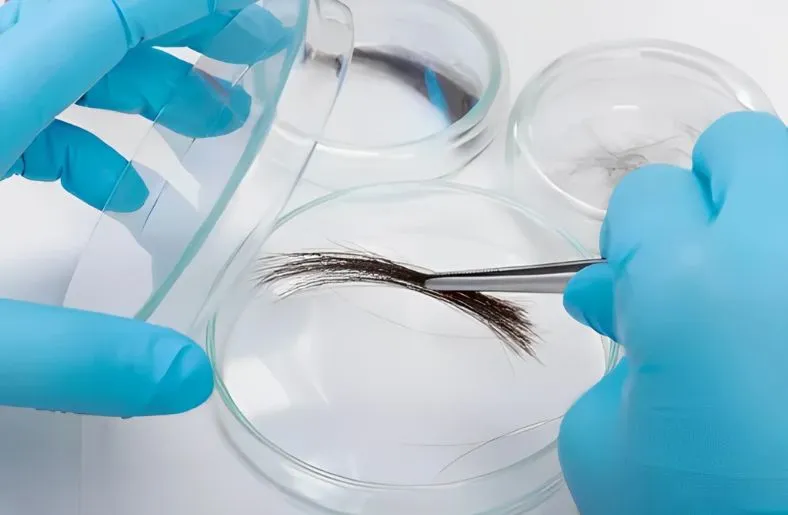Introduction
Research involving hair samples is important in many fields, such as forensics and genetics. These studies can reveal information about a person’s health and history. However, collecting hair samples from brushes IRB guidelines requires careful attention to ethical guidelines. The Institutional Review Board (IRB) sets rules to protect people who participate in research. Following these guidelines helps ensure participants’ rights and privacy are respected.
In this article, we will explore the specific collecting hair samples from brushes IRB guidelines for collecting hair samples from brushes. We will discuss the importance of informed consent, privacy concerns, and best practices for sample collection. Understanding these guidelines is essential for conducting ethical research. By following IRB rules, researchers can ensure their work is respectful and responsible.
1. Understanding IRB Guidelines
The Institutional Review Board (IRB) plays a key role in research. It reviews studies involving human participants to ensure they are ethical and safe. The IRB’s main purpose is to protect human subjects from harm and to ensure their rights are respected.
Collecting hair samples from brushes IRB guidelines outline the responsibilities researchers have when collecting biological samples, such as hair. These guidelines help researchers understand the legal and ethical implications of their work. For example, researchers must obtain informed consent from participants before collecting samples. This means participants must understand what the study involves and agree to take part.
Moreover, the guidelines emphasize the importance of participant safety. Researchers must consider potential risks and take steps to minimize them. This might include explaining how hair samples will be used and stored. By following these guidelines, researchers can conduct their work responsibly and ethically. This not only protects participants but also enhances the credibility of the research. Thus, understanding and adhering to collecting hair samples from brushes IRB guidelines is essential for anyone involved in studies using human biological materials.
2. Importance of Informed Consent
Informed consent is a crucial part of ethical research. It means that participants understand what a study is about and agree to take part. This is especially important when collecting hair samples from brushes IRB guidelines is involved. Researchers must explain the purpose of the study and how the hair samples will be used.
When obtaining consent, researchers should provide clear information about the study. This includes details about the collection process, potential risks, and how participants’ data will be handled. Participants must know they can ask questions and get answers before agreeing.
It’s also vital for participants to know that they can withdraw from the study at any time. This helps respect their autonomy and rights. Researchers must ensure there is no pressure to participate. The goal is to create a safe and comfortable environment for participants.
Informed consent builds trust between researchers and participants. It shows that researchers value their participants’ rights and well-being. When participants feel informed and respected, they are more likely to engage positively in the study. Overall, informed consent is essential for conducting ethical research and is a key aspect of the collecting hair samples from brushes IRB guidelines.
3. Privacy and Confidentiality Concerns
Hair samples contain valuable genetic information, raising important privacy and confidentiality concerns. Protecting the identities of participants is essential when collecting hair samples from brushes IRB guidelines are followed. To do this, researchers must take steps to anonymize data. This means removing any information that could identify a participant from the samples.
Anonymization helps ensure that no one can trace the hair samples back to an individual without consent. Researchers can use unique identifiers, like numbers or codes, instead of names. This way, only authorized personnel have access to identifying information.
Maintaining confidentiality is not just about anonymization; it also involves secure data storage. Researchers must store hair samples and related data in locked, secure locations. For digital data, using encrypted databases and strict access controls is essential. This protects participants’ information from unauthorized access or breaches.
Furthermore, researchers must train their staff on privacy best practices. Everyone involved in the study should understand the importance of keeping participants’ information confidential. By following these steps, researchers can help protect participants’ rights and privacy. This not only builds trust but also aligns with the collecting hair samples from brushes IRB guidelines for ethical research practices.
4. Methodologies for Collecting Hair Samples
When collecting hair samples from brushes IRB guidelines are in place, researchers must follow specific methodologies. These methods ensure that the collection process is safe and effective. The good news is that collecting hair samples is usually non-invasive. This means it doesn’t hurt participants and doesn’t require any medical procedures.
One common method is to ask participants to provide their grooming tools, like brushes. Researchers then carefully extract the hair using sterile tools to avoid contamination. This helps ensure the quality of the samples for analysis. It is important to handle brushes with care to avoid damaging them or losing any hair.
Using sterile techniques is essential during collection. Researchers should wear gloves and use clean tools to minimize contamination risks. This ensures that the hair samples are reliable for further study.
Additionally, researchers must document the collection process. This includes noting the date, time, and method used for each sample. This documentation helps maintain a clear record and ensures that the research is transparent and reproducible.
By following these best practices, researchers can collect high-quality hair samples that are suitable for analysis. This adherence to proper methodologies aligns with the collecting hair samples from brushes IRB guidelines and contributes to responsible research practices.
5. Storing and Analyzing Hair Samples
Proper storage and analysis of hair samples are crucial for successful research. After collecting hair samples from brushes IRB guidelines are followed, researchers must ensure they are stored correctly to prevent degradation. Hair samples can be sensitive to environmental conditions, so a climate-controlled environment is essential.
Samples should be stored in sealed containers to protect them from contamination and external factors. Researchers must keep the samples in a cool, dry place to maintain their integrity. This careful storage helps ensure the samples remain usable for future analysis.
When it comes to analyzing hair samples, researchers must align their methods with the research goals. They should use techniques that match the study’s purpose, whether it’s for genetic analysis or detecting environmental pollutants. It’s important to follow established protocols for the specific analysis methods used.
Additionally, transparency is key when communicating with participants about how their samples will be used. If the research goals change or if secondary analyses are planned, researchers should inform participants. This respect for participants’ rights and understanding is essential in ethical research.
By adhering to proper storage and analysis methods, researchers can ensure the reliability of their findings. Following these practices is not only vital for the research’s success but also aligns with the collecting hair samples from brushes IRB guidelines for ethical research.
6. Ethical Considerations in Hair Sample Research
Ethical considerations are vital when conducting research with hair samples. Even though hair sample collection is less invasive than other methods, it still poses ethical challenges. Researchers must minimize any potential risks to participants, including concerns about the misuse of genetic data.
One significant risk involves how genetic information could be used in the future. Researchers should be aware of these concerns and take steps to protect participants’ rights. This might include limiting access to sensitive data and ensuring it is used only for the intended purpose.
Additionally, researchers must consider the implications of their findings. Hair samples can reveal sensitive information about a participant’s health or ancestry. Researchers must handle this information responsibly and share it with participants in a respectful manner.
The IRB plays a crucial role in safeguarding participants’ rights throughout the research process. Researchers must seek IRB approval before starting any study involving hair samples. This process helps ensure that ethical standards are met and that participants are protected from potential harm.
By addressing these ethical considerations, researchers can conduct responsible studies that respect participants’ rights. Upholding ethical practices aligns with the collecting hair samples from brushes IRB guidelines and fosters trust between researchers and participants. Overall, ethical considerations are essential for successful and responsible hair sample research.
Conclusion
In conclusion, adhering to the collecting hair samples from brushes IRB guidelines is essential for conducting ethical research. Researchers must prioritize informed consent, participant privacy, and confidentiality throughout the study. By following established methodologies for sample collection, secure storage, and transparent analysis, they can ensure the integrity of their findings. Additionally, addressing ethical considerations reinforces trust between researchers and participants. Ultimately, responsible practices not only protect individuals involved in the research but also enhance the credibility and impact of scientific studies involving hair samples, contributing to advancements in forensics and genetics.




